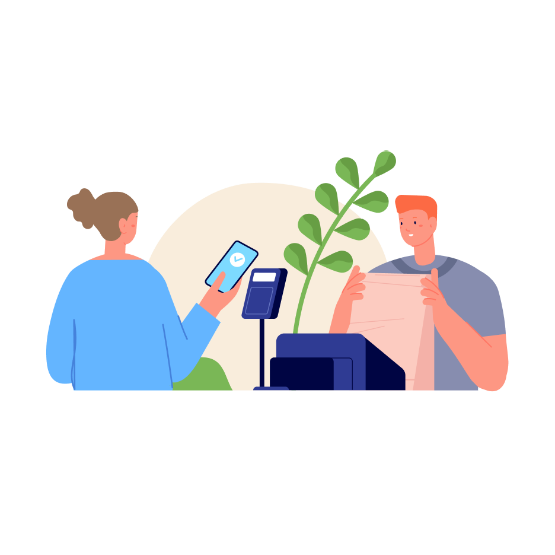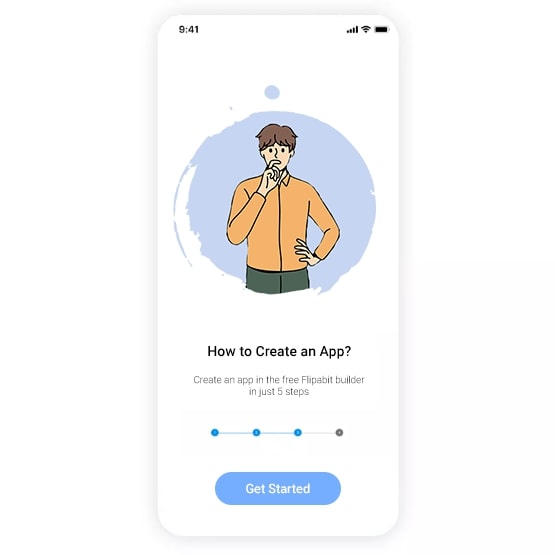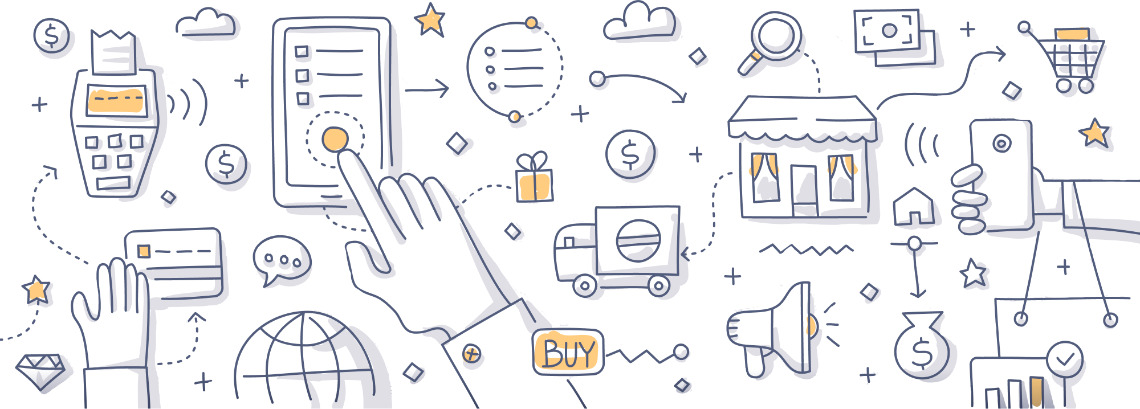Ecommerce is becoming more and more popular every year and consumers are spending more time on their mobile devices than on their Macs or PCs. The growing competition is prompting many companies and entrepreneurs to focus on creating a positive consumer experience and establishing mobile sales channels through applications for iOS and Android.


Create a shopping or marketplace app for Android or iOS following these steps:
E-commerce is inextricably linked with finance. Banks and electronic payment systems actively use applications to check balances, pay bills, transfer money, simplify labor-intensive banking processes, and so on.
During the COVID-19 pandemic, consumer preferences changed dramatically. Most transactions began to be done online. Mobile applications where one can find and order products now make up a large portion of these sales.
Tourism and travel is still a fairly profitable industry. The popularity of applications for booking hotel rooms, hostels, travel services, or even train and plane tickets online is only growing.
E-books and digital magazines are gradually replacing traditional print publications. The portability and accessibility allows a person to read anywhere they want.
These features make it possible to improve customer service quality while increasing retention time, conversion, and even profit. Therefore, it is important to pay special attention to these functions when developing your own e-commerce application.
A simple, convenient registration process will make your application more accessible. And while most users use quick sign-in via social media (such as Facebook or Twitter), it's worth leaving an alternative such as email for those who don't want to associate their apps with their accounts.
Providing the user with a fast and secure payment method will make them more likely to make a purchase and come back to you next time. For example, offer to let the user pay for a product or service using familiar options like Google Pay, Apple Pay, or PayPal.
Most users make their final purchase decision after reading the description of a product or service. High-quality photos taken from various angles, videos, and well-written, technically correct descriptions help put a potential buyer’s fears about making the wrong choice at ease.
A shopping cart saves time and improves the user experience. This is a must-have feature for any online store and mobile e-commerce application. It allows products to be saved, reviewed, ordered, and then paid for. It also shows the customer the total cost of their purchases. The user can complete the purchase process for the selected items at a later time.
When it comes to e-commerce, the customer does not get the opportunity to communicate face-to-face with the seller. Communication through a built-in chat allows problems to be solved and questions answered in a timely manner. In other words, easy access to customer support improves the user experience.
Push notifications help remind or inform consumers about sales, discounts, promotions, custom or organic offers, product deliveries, and more. Once notified, the user is more likely to navigate to the app for details. Push notifications allow you to increase conversions, and therefore profits.
The ability to quickly and accurately track a package allows the customer to know the exact date and time of delivery. This kind of transparency builds trust and loyalty to the seller or store.

Discounts and coupons are simple but very effective ways to increase your sales. Many e-commerce applications become popular precisely because of discounts and all kinds of gifts when purchasing through the application. For example, AliExpress has many promotions that are only available in the mobile app.
Advertising is the most common way of monetizing a free application. Despite the fact that this approach can scare off many users, thereby significantly slowing the growth of an application's popularity, advertising remains one of the most viable ways to monetize. However, it is important to understand that advertising should not negatively impact the user experience.
There is no more effective way to monetize than with in-app purchases, especially if the user receives a small gift with every purchase.
Approximately 35% of all customers in the United States use mobile devices to find and purchase products on the Internet
About 72.9% of all e-commerce sales in 2021 were generated through mobile devices
The number of Apple Pay users was 507 million
An application for the sale of goods or services over the Internet to a consumer or other business.
Allow you to make purchases anywhere and anytime, without being tied to a computer.
Were much more comfortable choosing goods and services through an application than entering the online store through a mobile browser.
Guarantee a higher level of security when compared to a browser. Plus, they work many times faster.
Improve user experience by making navigation more convenient.
Competent UX/UI design. The appearance and functionality of an interface has a huge impact on user comfort. A beautiful, smooth, intuitive interface increases retention, which will undoubtedly have a positive impact on sales.
Simple authentication. Give the user the opportunity to register and enter their personal profile using their social media account.
Discounts and special offers. Inform the customer about discounts, special offers, and seasonal sales that are valid when purchased through the application.
The ability to leave ratings and reviews for goods and services. User reviews and ratings help increase trust in sellers, specific products, and services. This means that the user can make the best possible choice.
See how Flipabit can help you create an app you'll love
The Flipabit App Maker lets you build an online store, marketplace. With features to increase users engagement and powerful monetization tools, it's easy to create your own workout app.